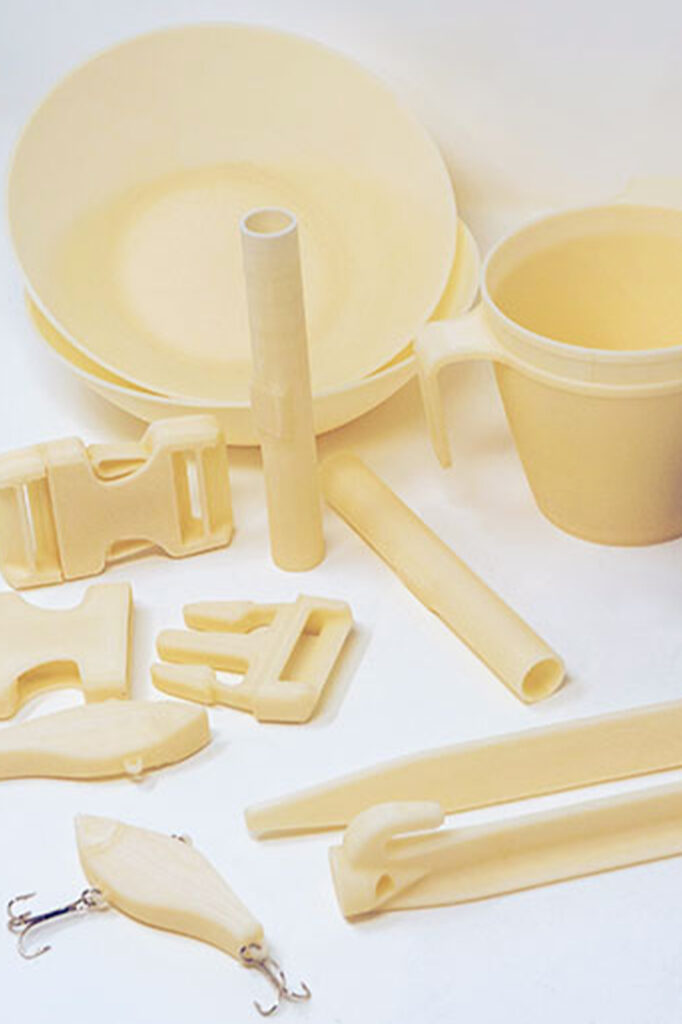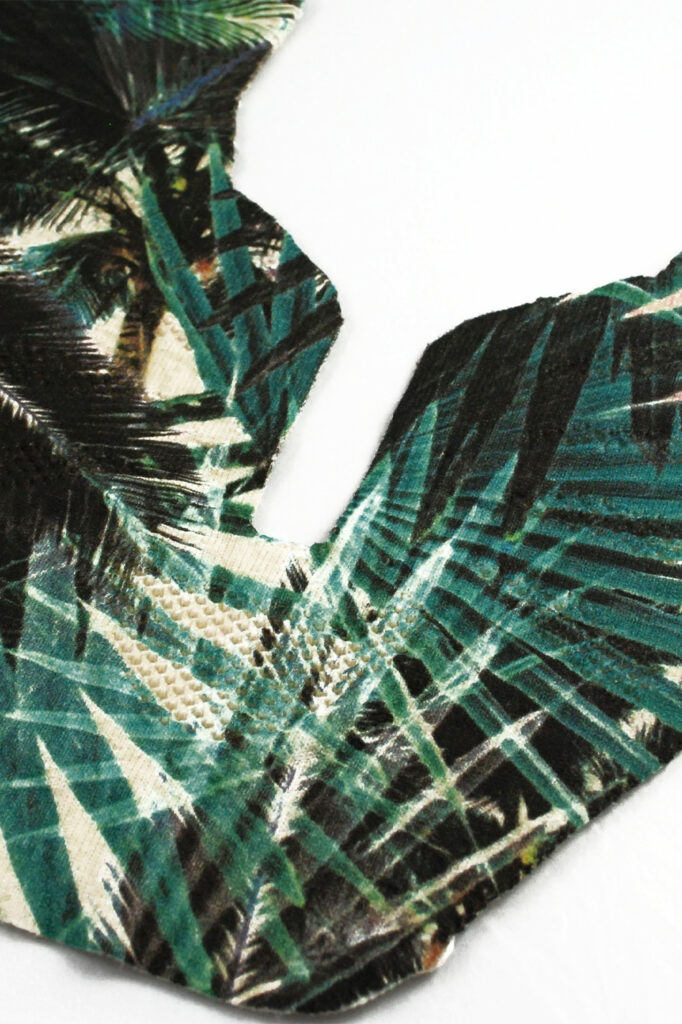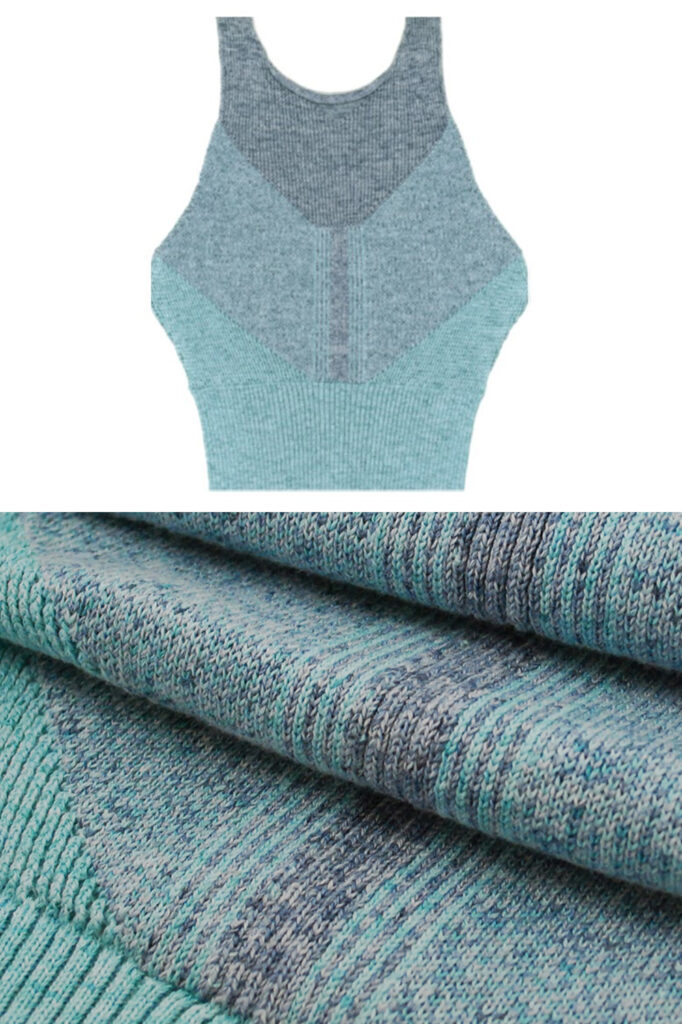Cotton may be a plant, but there’s no limit to what it can do. Cotton Incorporated works to harness the full potential of this natural, biodegradable fiber through continuous research and development. The result: innovation from farm to finished product.
At its state-of-the-art research facility, Cotton Incorporated investigates the sustainable impact of cotton, invents, and improves technologies, designs groundbreaking fabrics, and engineers unexpected market applications for cotton. All activities support one, overarching goal: inspiring industry professionals to get the most from cotton with exciting, new products that sustain profitable businesses.
Following are three of the latest product innovations that demonstrate the versatility and value of cotton: 3D printing, shoe uppers, and performance knit-to-shape.
Reimagining the Natural Possibilities for 3D Printed Materials

There’s a growing need across industries to develop more sustainable, bio-based materials.1 For 3D printing and injection molding, which means finding alternatives to thermoplastics which often are made with unsustainable petroleum-based raw materials.
Cotton Incorporated and its research collaborators have been exploring applications for cotton as filler in 3D printing for several years and developed the first commercialized material containing cotton. It’s a filament that also contains polylactic acid (PLA), which boasts a positive sustainability profile. PLA is biodegradable and typically made from the sugars derived from corn starch, cassava, or sugarcane.
The new material is on display in the recently released 3D printed collection designed for the outdoor industry. The exploratory collection includes a tent stake, tent pole splint, flashlight housing, fishing lure, mug, bowl, and buckle. It’s an exciting step, but the work continues. Researchers are investigating how to increase the filament’s cotton content and use it in new products—offering an improved sustainability profile and an alternative to materials like plastic.
Reconstructing Shoe Uppers with Carbon-Positive Cotton

The footwear industry is ripe for materials innovation. Many materials used in shoe construction today, such as leather, urethanes, and synthetic fibers, do not support brands’ sustainability goals and initiatives—or the rising interest in biodegradable shoes.
As a natural fiber with a circular lifecycle, cotton may offer an appealing alternative.
While it’s commonly known that cotton can be reused, recycled,2 and returned to the earth,3 cotton also has a compelling carbon story to tell. The cotton plant naturally sequesters carbon in the soil and in the fiber itself through photosynthesis. It’s very efficient at removing CO2 from the atmosphere and storing it.4 Ultimately, cotton’s contribution to the carbon equation is an appealing factor for the footwear industry and many others.
Cotton Incorporated researchers have developed a 100% cotton shoe upper prototype to deliver on these environmental benefits and the familiarity and comfort consumers love.
The uppers represent an important step on the path to more environmentally friendly shoes, without sacrificing quality or performance. The cotton shoe uppers easily support customized embellishment such as digital printing and dyeing, as well as attached stitched logos with the same wearability and durability as a synthetic upper. It’s an innovative way to bring this feel-good fiber to footwear.
Customizing Garments & Reducing Waste with Knit-to-Shape Process

Many brands are seeking innovative opportunities to improve sustainability at different stages of garment production, such as decreasing the volume of cutting waste—and resulting energy required for recycling—as well as dead stock.
The knit-to-shape method offers a highly precise option with zero to minimal waste. It’s highly functional, customizable, and fashion-forward, supporting more tailored products destined to find the right customer, rather than the landfill.
While knit-to-shape is not new, Cotton Incorporated textile experts have iterated on the available technology and expanded the possibilities for cotton. The enhanced engineering can create different zones within a single piece, body-mapped to match the wearer’s needs. Designers can reduce or remove seams for greater comfort and experiment with shapes and patterns.
Cotton Incorporated’s fully fashioned knit-to-shape grouping includes three body-mapped athleisure tanks.
Performance features include areas of mesh for built-in breathability and rib structures strategically placed for enhanced fit; one tank incorporates TransDRY® technology for moisture management. The three designs demonstrate a range of patterning potential, from organic shapes to florals through intarsia and jacquard techniques. Each piece in the collection illustrates the potential to serve consumers who incorporate physical activity into their everyday lives and seek garments with performance, comfort, and style.
Stay Tuned
There’s always something new in the pipeline at Cotton Incorporated, with seasoned experts dedicated to bringing fresh innovation and inspiration to every stage of the product development process. As new technologies, applications, and product ideas emerge, CottonWorks™ will be a resource for the cotton industry to stay competitive and up to date.
1 Scott, M. (2017, September 16). 5 reasons why ABS needs to go away. All3DP. Retrieved July 25, 2022, from https://all3dp.com/5-reasons-why-abs-needs-to-go-away/
2 Cotton products are recyclable only in a few communities that have appropriate recycling facilities.
3 Results vary depending on environment.
Li, Lili; Frey, Margaret; Browning, Kristie (2010). Biodegradability study on cotton and polyester fabrics. Journal of Engineered Fiber and Fabrics, 5(4), 42-53.
4 Franzluebbers, A. J. (2010). Achieving Soil Organic Carbon Sequestration with Conservation Agricultural Systems in the Southeastern United States. Soil Science Society of America Journal, 74(2), 347–357. https://doi.org/10.2136/sssaj2009.0079